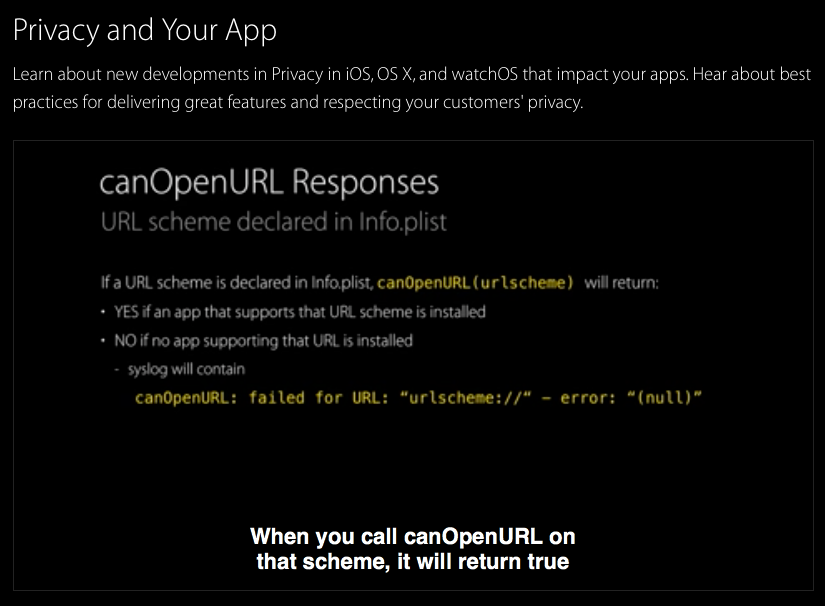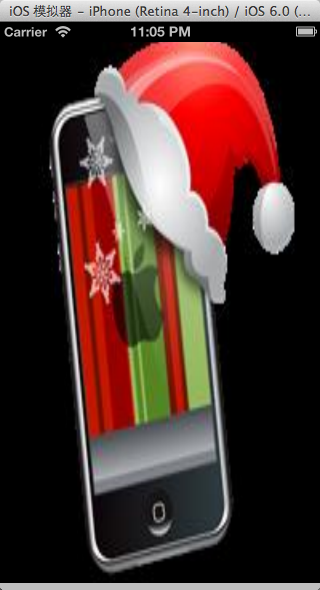iphone開發:地圖繪制軌跡
iOS中的MapKit集成了google地圖api的很多功能加上iOS的定位的功能,我們就可以實現將你運行的軌跡繪制到地圖上面。這個功能非常有用,比如汽車的gprs追蹤、人員追蹤、快遞追蹤等等。這篇文章我們將使用Map Kit和iOS的定位功能,將你的運行軌跡繪制在地圖上面。
實現
在之前的一篇文章:iOS開發之在google地圖上顯示自己的位置中描述了如何在地圖上顯示自己的位置,如果我們將這些位置先保存起來,然後串聯起來繪制到地圖上面,那就是我們的運行軌跡了。
首先我們看下如何在地圖上繪制曲線。在Map Kit中提供了一個叫MKPolyline的類,我們可以利用它來繪制曲線,先看個簡單的例子。
使用下面代碼從一個文件中讀取出經緯度,然後創建一個路徑:MKPolyline實例。
-(void) loadRoute
{
NSString* filePath = [[NSBundle mainBundle] pathForResource:@”route” ofType:@”csv”];
NSString* fileContents = [NSString stringWithContentsOfFile:filePath encoding:NSUTF8StringEncoding error:nil];
NSArray* pointStrings = [fileContents componentsSeparatedByCharactersInSet:[NSCharacterSet whitespaceAndNewlineCharacterSet]];
// while we create the route points, we will also be calculating the bounding box of our route
// so we can easily zoom in on it.
MKMapPoint northEastPoint;
MKMapPoint southWestPoint;
// create a c array of points.
MKMapPoint* pointArr = malloc(sizeof(CLLocationCoordinate2D) * pointStrings.count);
for(int idx = 0; idx < pointStrings.count; idx++)
{
// break the string down even further to latitude and longitude fields.
NSString* currentPointString = [pointStrings objectAtIndex:idx];
NSArray* latLonArr = [currentPointString componentsSeparatedByCharactersInSet:[NSCharacterSet characterSetWithCharactersInString:@","]];
CLLocationDegrees latitude = [[latLonArr objectAtIndex:0] doubleValue];
CLLocationDegrees longitude = [[latLonArr objectAtIndex:1] doubleValue];
// create our coordinate and add it to the correct spot in the array
CLLocationCoordinate2D coordinate = CLLocationCoordinate2DMake(latitude, longitude);
MKMapPoint point = MKMapPointForCoordinate(coordinate);
//
// adjust the bounding box
//
// if it is the first point, just use them, since we have nothing to compare to yet.
if (idx == 0) {
northEastPoint = point;
southWestPoint = point;
}
else
{
if (point.x > northEastPoint.x)
northEastPoint.x = point.x;
if(point.y > northEastPoint.y)
northEastPoint.y = point.y;
if (point.x < southWestPoint.x)
southWestPoint.x = point.x;
if (point.y < southWestPoint.y)
southWestPoint.y = point.y;
}
pointArr[idx] = point;
}
// create the polyline based on the array of points.
self.routeLine = [MKPolyline polylineWithPoints:pointArr count:pointStrings.count];
_routeRect = MKMapRectMake(southWestPoint.x, southWestPoint.y, northEastPoint.x - southWestPoint.x, northEastPoint.y - southWestPoint.y);
// clear the memory allocated earlier for the points
free(pointArr);
}
將這個路徑MKPolyline對象添加到地圖上
[self.mapView addOverlay:self.routeLine];
顯示在地圖上:
- (MKOverlayView *)mapView:(MKMapView *)mapView viewForOverlay:(id )overlay
{
MKOverlayView* overlayView = nil;
if(overlay == self.routeLine)
{
//if we have not yet created an overlay view for this overlay, create it now.
if(nil == self.routeLineView)
{
self.routeLineView = [[[MKPolylineView alloc] initWithPolyline:self.routeLine] autorelease];
self.routeLineView.fillColor = [UIColor redColor];
self.routeLineView.strokeColor = [UIColor redColor];
self.routeLineView.lineWidth = 3;
}
overlayView = self.routeLineView;
}
return overlayView;
}
看下從文件中讀取數據繪制的軌跡路徑效果:
然後我們在從文件中讀取位置的方法改成從用gprs等方法獲取當前位置。
第一步:創建一個CLLocationManager實例
第二步:設置CLLocationManager實例委托和精度
第三步:設置距離篩選器distanceFilter
第四步:啟動請求 www.2cto.com
代碼如下:
- (void)viewDidLoad {
[super viewDidLoad];
noUpdates = 0;
locations = [[NSMutableArray alloc] init];
locationMgr = [[CLLocationManager alloc] init];
locationMgr.delegate = self;
locationMgr.desiredAccuracy =kCLLocationAccuracyBest;
locationMgr.distanceFilter = 1.0f;
[locationMgr startUpdatingLocation];
}
上面的代碼我定義了一個數組,用於保存運行軌跡的經緯度。
每次通知更新當前位置的時候,我們將當前位置的經緯度放到這個數組中,並重新繪制路徑,代碼如下:
- (void)locationManager:(CLLocationManager *)manager
didUpdateToLocation:(CLLocation *)newLocation
fromLocation:(CLLocation *)oldLocation{
noUpdates++;
[locations addObject: [NSString stringWithFormat:@"%f,%f",[newLocation coordinate].latitude, [newLocation coordinate].longitude]];
[self updateLocation];
if (self.routeLine!=nil) {
self.routeLine =nil;
}
if(self.routeLine!=nil)
[self.mapView removeOverlay:self.routeLine];
self.routeLine =nil;
// create the overlay
[self loadRoute];
// add the overlay to the map
if (nil != self.routeLine) {
[self.mapView addOverlay:self.routeLine];
}
// zoom in on the route.
[self zoomInOnRoute];
}
我們將前面從文件獲取經緯度創建軌跡的代碼修改成從這個數組中取值就行了:
// creates the route (MKPolyline) overlay
-(void) loadRoute
{
// while we create the route points, we will also be calculating the bounding box of our route
// so we can easily zoom in on it.
MKMapPoint northEastPoint;
MKMapPoint southWestPoint;
// create a c array of points.
MKMapPoint* pointArr = malloc(sizeof(CLLocationCoordinate2D) * locations.count);
for(int idx = 0; idx < locations.count; idx++)
{
// break the string down even further to latitude and longitude fields.
NSString* currentPointString = [locations objectAtIndex:idx];
NSArray* latLonArr = [currentPointString componentsSeparatedByCharactersInSet:[NSCharacterSet characterSetWithCharactersInString:@","]];
CLLocationDegrees latitude = [[latLonArr objectAtIndex:0] doubleValue];
CLLocationDegrees longitude = [[latLonArr objectAtIndex:1] doubleValue];
CLLocationCoordinate2D coordinate = CLLocationCoordinate2DMake(latitude, longitude);
MKMapPoint point = MKMapPointForCoordinate(coordinate);
if (idx == 0) {
northEastPoint = point;
southWestPoint = point;
}
else
{
if (point.x > northEastPoint.x)
northEastPoint.x = point.x;
if(point.y > northEastPoint.y)
northEastPoint.y = point.y;
if (point.x < southWestPoint.x)
southWestPoint.x = point.x;
if (point.y < southWestPoint.y)
southWestPoint.y = point.y;
}
pointArr[idx] = point;
}
self.routeLine = [MKPolyline polylineWithPoints:pointArr count:locations.count];
_routeRect = MKMapRectMake(southWestPoint.x, southWestPoint.y, northEastPoint.x - southWestPoint.x, northEastPoint.y - southWestPoint.y);
free(pointArr);
}
這樣我們就將我們運行得軌跡繪制google地圖上面了。
摘自 雲懷空-abel
- iOS獲得以後裝備型號等信息(全)包括iPhone7和iPhone7P
- xcode8提交ipa掉敗沒法構建版本成績的處理計劃
- Objective-C 代碼與Javascript 代碼互相挪用實例
- iOS開辟之UIPickerView完成城市選擇器的步調詳解
- iPhone/iPad開辟經由過程LocalNotification完成iOS准時當地推送功效
- iOS法式開辟之應用PlaceholderImageView完成優雅的圖片加載後果
- iOS Runntime 靜態添加類辦法並挪用-class_addMethod
- iOS開辟之用javascript挪用oc辦法而非url
- iOS App中挪用iPhone各類感應器的辦法總結
- 實例講授iOS中的UIPageViewController翻頁視圖掌握器
- IOS代碼筆記UIView的placeholder的後果
- iOS中應用JSPatch框架使Objective-C與JavaScript代碼交互
- iOS中治理剪切板的UIPasteboard粘貼板類用法詳解
- iOS App開辟中的UIPageControl分頁控件應用小結
- 詳解iOS App中UIPickerView轉動選擇欄的添加辦法




